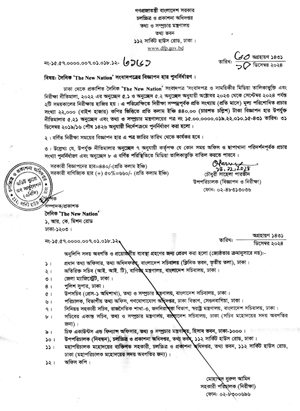Staff Reporter :
The trade gap between Bangladesh and India surpassed $9 billion from April 2023 to March 2024, with Bangladesh’s exports to India declining sharply by 8.47 percent to $1.84 billion from $2.02 billion in the same period of the previous year.
Similarly, Bangladesh’s imports from India also fell by 9.45 percent to $11.06 billion from $12.21 billion over the same period.
As a result, the bilateral trade volume between the two countries decreased by 9.35 percent to $12.90 billion in FY24 (April–March) compared to $14.24 billion in FY23, according to data from the Department of Commerce under the Indian government.
It is notable that India’s financial year runs from April 1 to March 31.
The Indian data also revealed that the country’s knitwear imports from Bangladesh in FY24 dropped by 34.05 percent to $204.11 million from $309.48 million in FY23. Woven garment imports by India from Bangladesh in FY24 decreased by 11.79 percent to $391.42 million from $443.71 million in FY23.
Experts and exporters noted that Bangladesh’s imports from India decreased due to the central bank’s adoption of an import contraction policy in response to the dollar crisis.
Concurrently, various initiatives by the Indian government, such as the anti-dumping duty on Bangladesh’s jute yarn, hessian, and bags, and the export ban on rice and onions, have significantly impacted the overall trade volume recently.
Meanwhile, according to the Export Promotion Bureau (EPB), Bangladesh and India recorded $5.3 billion in bilateral trade in FY 2012–13. By FY22, this figure had surged to $15.93 billion, marking a 200 percent expansion in bilateral trade. India remains Bangladesh’s second-largest trading partner after China.
In FY 2018–19, Bangladesh reached the milestone of $1 billion in export earnings for the first time, with exports totaling $1.25 billion.
Just four years later, in the last financial year, this amount increased to $1.99 billion. Currently, one of the major export products to India is ready-made garments, with exports amounting to $715 million in the last financial year.
While trade has expanded, the trade deficit has also widened with India. Bangladesh imports more from India than it exports, leading to a significant trade imbalance. The trade deficit has increased by 186 percent over the last decade.
According to data from the Bangladesh Bank (BB) and the Export Promotion Bureau (EPB), the trade deficit between Bangladesh and India was $4.18 billion in FY 2012–13, which rose to $11.95 billion by FY 2021–22. Meanwhile, according to the EPB,Bangladesh and India recorded $5.3 billion in bilateral trade in FY 2012–13.
By FY22, this figure had surged to $15.93 billion, marking a 200 percent expansion in bilateral trade. India remains Bangladesh’s second-largest trading partner after China.



